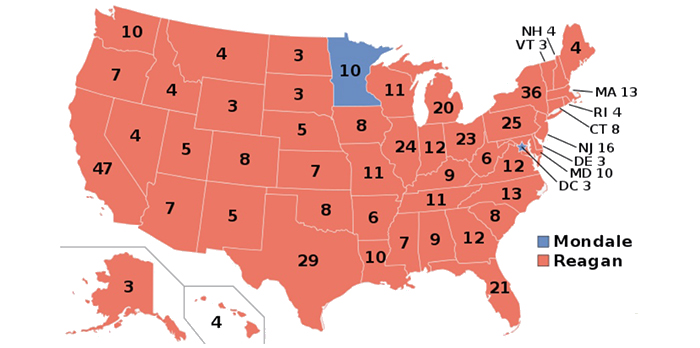

An article by Harry Enten at CNN shows just how closely divided the country is. In January, Democrats will have 50.5% of the Senate seats and Republicans will have 51.0% of the House seats and 52% of the governors' mansions. It is very unusual for all three to be so close. In fact, this is the first time since the popular election of senators began that neither party had more than 52% of any of these offices.
When looking at the vote counts, the closeness becomes even clearer. Republicans won the popular vote for the House by under 3 points and that would have been under 2 points if both parties had fielded candidates in all districts. For the Senate, Republicans won more votes than Democrats by 0.1%. However, if the Democrats had fielded a candidate in Utah instead of endorsing independent Evan McMullin, they would have gotten more votes nationwide. Democrats did get more votes for governor than the Republicans—by 0.3%. All of these numbers show that the country is balanced on knife edge. As we noted on Tuesday, if the Democrats had gotten 6,675 votes distributed in just the right way in the closest five districts, they would have held the House.
If we look at presidential elections, they haven't always been close. Here is the 1984 Electoral College map:

Does it look closely divided? But since then, no presidential candidate has won by double digits. The largest House majority since 1984 is the 11-point win the Democrats had in 2008. But we have to go back to 1982 to see another House win that large.
How has this happened? Political scientists say it is due to polarization. There aren't many swing voters anymore. But that doesn't really explain anything. In 10 years, when many current Republican voters will—how shall we put this gently?—not be participating in the 2032 elections, and kids now 8 years old will be voting, there could be a stable 55-45 Democratic majority that lasts for years and doesn't budge. What is special now is that it is so close and doesn't budge.
Maybe it is just dumb luck and we are in the middle of a transition from MAGA to not-MAGA and we are exactly halfway. Or maybe it is related to there being so few swing states and districts that each party can ignore 80% of the country and focus entirely on the other 20%.
But we think at least part of the reason is the extensive data collection and use of computers to analyze all the data that both parties have. Each party knows that in each election it needs 50% +1 votes (also in the Electoral College). Any more than that is wasted. With very detailed data, parties can work toward 50% +1 and when they think they have it nailed, move resources somewhere else. The ideal situation for a party is to spend whatever it takes to get 50% + 1 everywhere and not a penny more. Polling is not an exact science and weather can affect turnout, so each party has to aim a little bit higher to give itself some margin for error, but the goal is to not spend any more money or effort than needed to win a bare majority in each district and state. One recalls the telegram John F. Kennedy got from his father while running for the U.S. Senate: "Dear Jack—Don't buy a single vote more than necessary—I'll be damned if I am going to pay for a landslide."
But in JFK's time, it wasn't possible to target nearly as accurately. Now, if polling shows that a candidate needs another 1,000 votes in some district, the party's voter databases can pinpoint which specific voters to visit to try to get over the bar. To put it in Second Amendment terms, parties can now use a rifle instead of a shotgun to try to get just enough votes. Of course, it doesn't always work, but they try. (V)